Whip up a DIY face mask these 3 easy face mask patterns. In this post, we'll show you 3 methods for how to make a mask – including two free face mask pattern PDFs for pleated and shaped masks. These reusable face masks can be washed and used again and again – and adjusted to fit your face shape! Since these DIY face masks are designed to be cleaned regularly, with our instructions you can easily make a batch so that you always have one to hand when you need to go out.
If you are new to sewing, follow our video guide for how to make a mask without a sewing machine. You really don't need much, if any, sewing experience for this one.
If you're more confident with a sewing machine, we're also sharing two DIY face mask patterns by Burda Style – how to make a pleated face mask pattern and a wired face mask pattern. Special thanks Burda for kindly sharing this pattern with you all.
Lastly, if you’re short of time, we’ve also rounded up our favourite Etsy shops for you to shop the best Handmade face masks at the bottom of this post.

Your guide to handmade face masks
This post includes:
- Free face mask pattern 1 – how to make a face mask without a sewing machine
- Free face mask pattern 2 –how to make wired face mask
- Free face mask pattern 3 - how to make a pleated face mask
- How to make a child's face mask
- 10 of the best handmade face masks to buy
Before you make and wear your face mask
Please note, this face mask pattern is not medically certified nor has it been officially tested. The making and wearing of this mask is at your own risk. This is not a medical-grade face mask, and we cannot take responsibility for protecting you or your family from catching or spreading Coronavirus or other illnesses.
You can find the latest Government advice about face coverings, and when to wear them in the UK, at www.gov.uk.
How to make a face mask without a sewing machine
We know that not everyone has a sewing machine so we've created a video to show you how to hand sew a face mask. All you'll need is thread, kitchen towel, fabric and some pins. This easy DIY face mask pattern includes a simple pocket which you can slip a third filter layer into. Handmade face masks have never been so easy and quick to make!
Free face mask pattern: how to make a wired face mask
Wired masks fit snuggly to your face and are especially handy if you wear glasses. This free face mask pattern can be shaped around your nose behind glasses so the lenses don't fog up when you breathe.
We have made a video showing this free face mask pattern and how to make it, so if you prefer a video to step by step instructions., click to find the how to make a wired face mask video.
Prepare the fabric before you get started: as with all of our sewing patterns, we recommend that you wash each fabric before you cut and sew it. That way, the sewn sections can’t shrink later in the wash. Iron the fabric smooth before you start to make it easier to cut.
You will need
- Tightly woven cotton fabric – 40 x 40 cm (16x16in)
- Elastic – 5 mm (3⁄16in) wide, about 50 cm (20in)
- 2 small safety pins
- Florist's wire or medium weight hobby wire, about 20 cm (8in)
- Interchangeable filter layer – for example paper kitchen towels or antibacterial fibre fleece (you could use a high-filter vacuum cleaner bag or clean antibacterial dish washing sponge cloth)
- Basic sewing kit
- Sewing thread and a sewing machine (a sewing machine would be ideal but with a little patience, this mask can also be sewn by hand)

Free wired face mask pattern – step by step
Download our Face mask pattern (PDF) to get started. The pattern pieces include 1 cm (⅜in) seam allowance.
Sizes
- M Children (Normal) / Adults (Small)
- L Adults (Normal)
- XL Adults (Large)
Step 1
Prepare your materials.
Before you begin, gather all required supplies. Cut out the paper face mask pattern pieces in your size from pages 4 and 5 of our free mask pattern (above).
Cut the following pieces:
- Pattern piece 1 – cut 1 x piece 1 from the top cotton fabric
- Pattern piece 2 – cut 2 x piece 2 from the both the lining and filter
If you would like to sew different sizes, please use tracing paper or dressmaker's carbon paper to trace each size. The face mask pattern pieces include 1 cm (⅜in) seam allowance. You will also have to sew 1 cm (⅜in) next to the edge.

Step 2
Cut out the pieces for the fabric face mask.
Fold the fabric in half, right side facing in. Pin paper pattern piece 1 to the double layer of fabric (printed side facing up) and use chalk or a pen to mark along the edge of the paper pattern piece. Cut out on the marked lines. Clip about 3 mm (⅛in) into the seam allowances at the small markings. Use pattern piece 2 to cut out the lining and the filter. Trim the upper and lower edges of the pieces for the filter each by 1 cm (⅜in) so that they better fit into the mask.
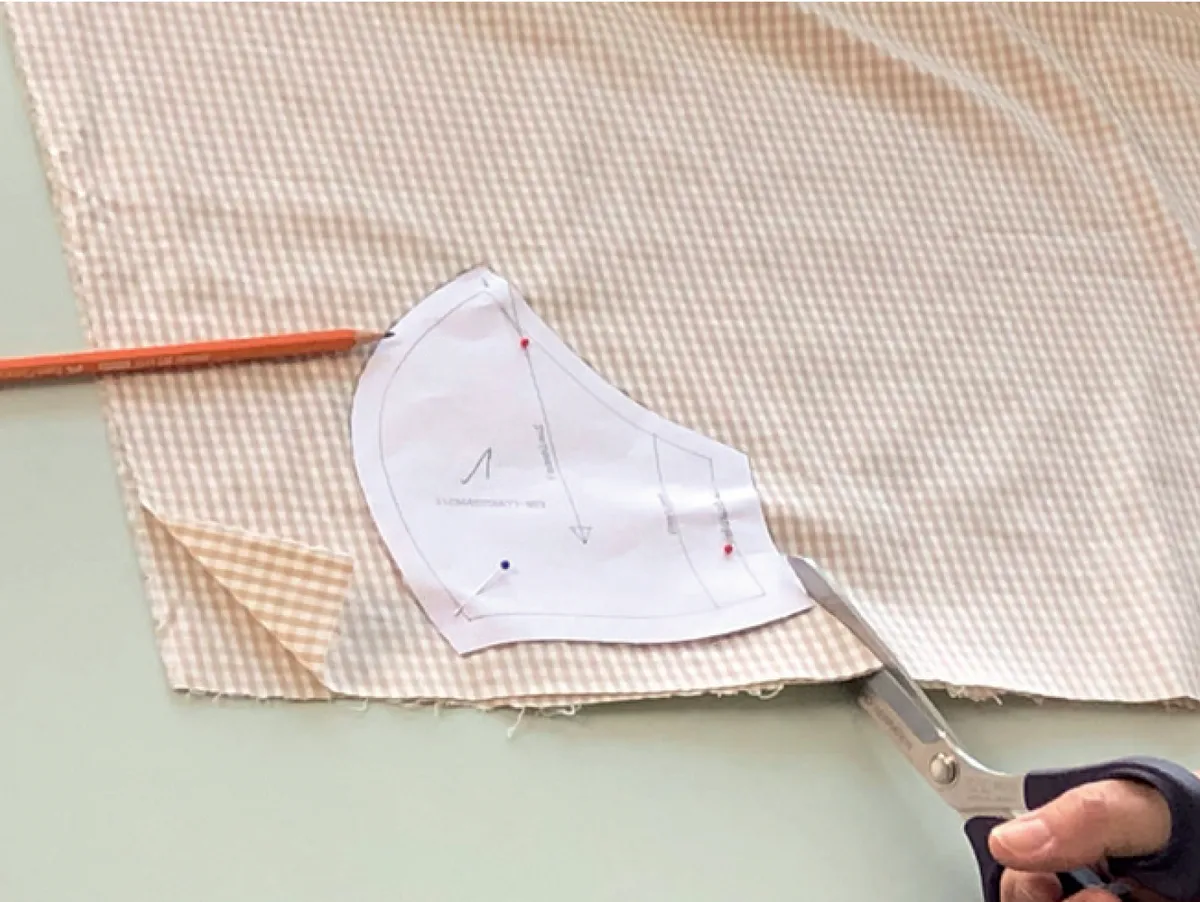
Step 3
Stitch the centre seam.
Remove the paper pattern pieces but leave the fabric pieces together. Stitch the pieces together along the curved centre seam spaced 1 cm (⅜in) next to the edge. Then trim the seam allowances to 5 mm (3⁄16in). The allowances can also be clipped toward the line of stitching along the curve. Important: Do not cut into the seam. Then press the allowances open. Stitch the seams on the lining and centre seam on the filter likewise.
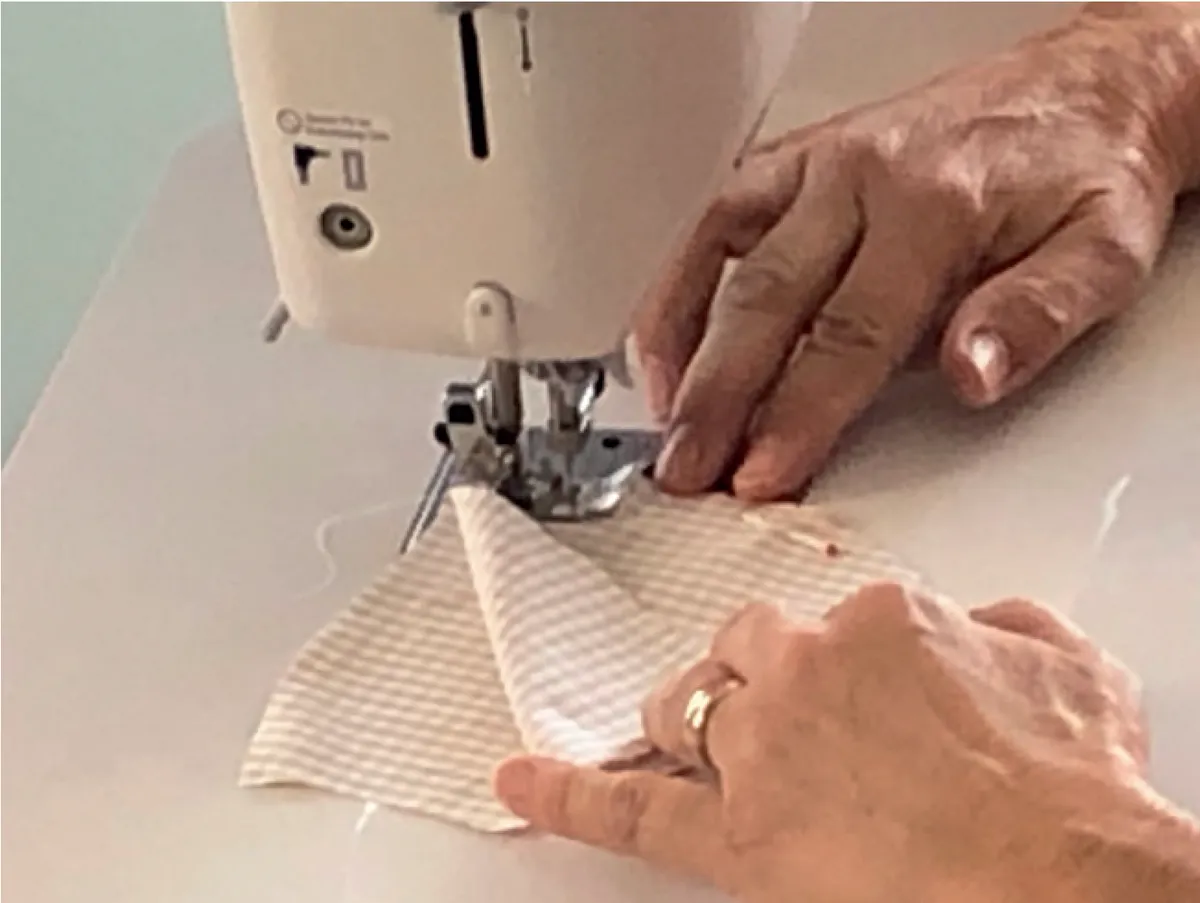
Step 4
Topstitch the centre seam.
Stitch to each side of the centre seam on all pieces (outer mask, lining and filter) spaced 2 mm (a scant (⅛in) next to the pressed open seam allowances. This will make the seam lie flat.
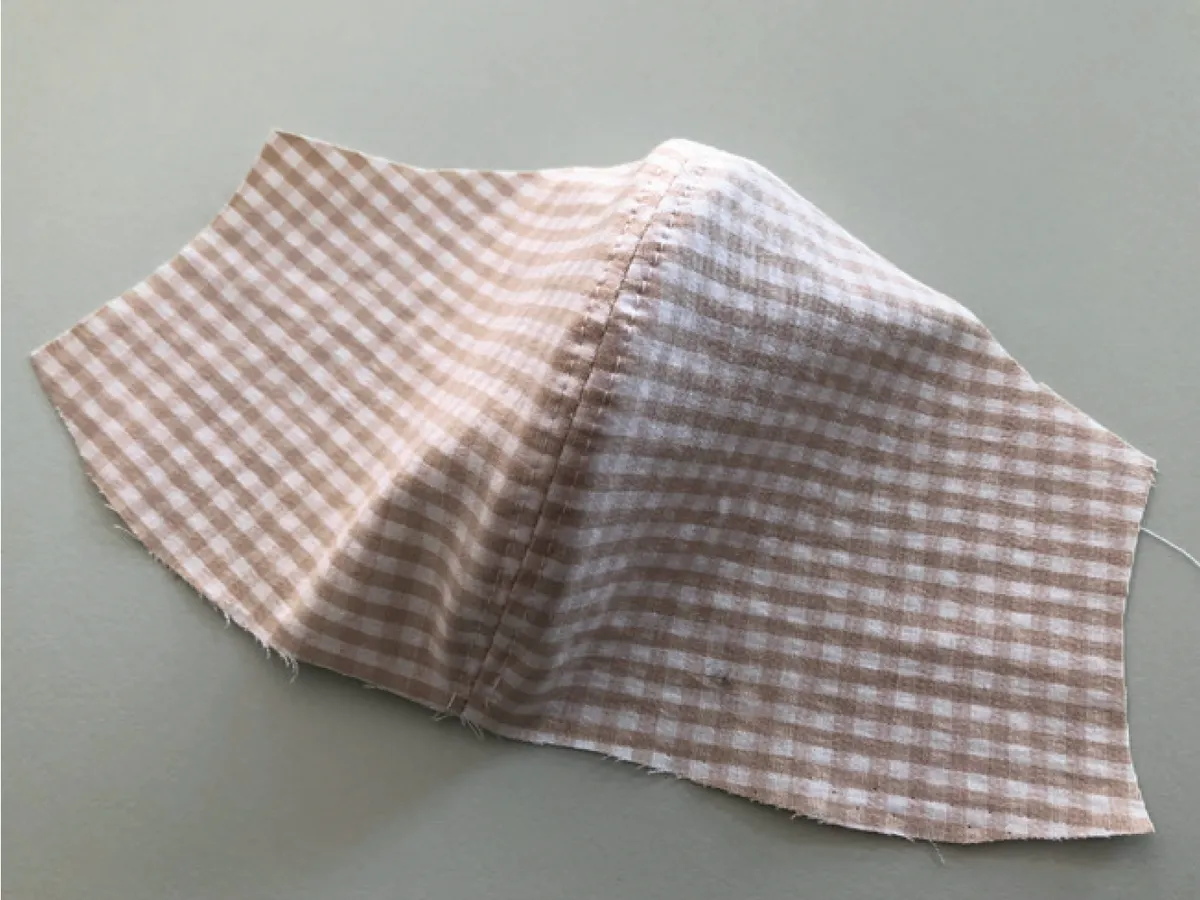
Step 5
Finish the side edges of the lining.
Neaten the allowances at the short edges of the lining with a narrow zigzag stitch or overlock stitch. Then press the allowances 1 cm (⅜in) wide to the inside and stitch.
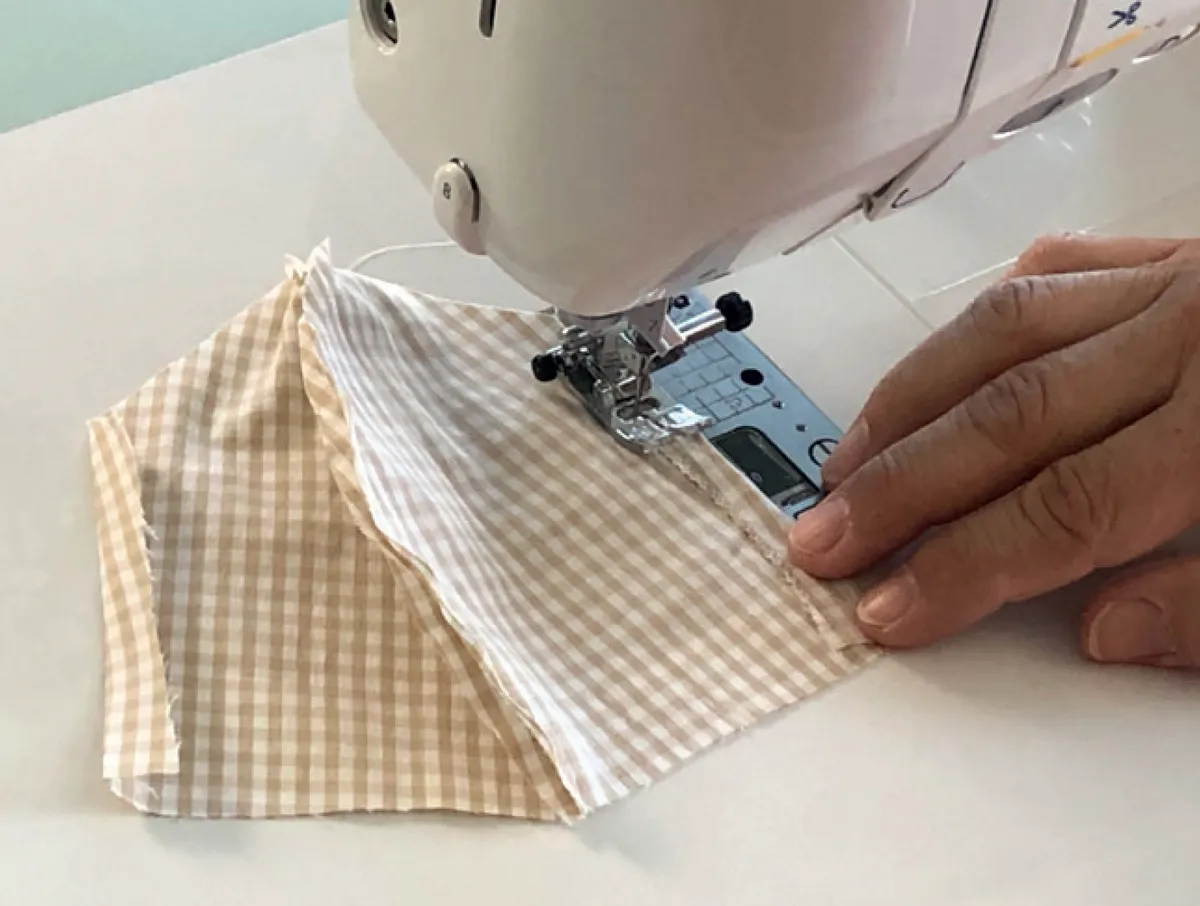
Step 6
Double the mask.
Lay the lining on the mask with right sides facing, e.g. the 'good' fabric sides are facing in. Pin the upper and lower edges of the mask and lining together (matching centre seams). Stitch these edges together 1 cm next to the edges. Turn the mask right side out (the 'good' fabric side is now facing out) and press the upper and lower edges flat. Also press the seam allowance not yet sewn at the end of both edges. Stitch 7mm (¼") wide along the upper edge (width of your machine's presser foot) from one side edge to the other.

Step 7
Construct a casing for the elastic.
Press the allowances at the side edges of the mask 1.5 cm (⅝in) wide to inside (the small clippings indicate the width), and stitch the allowances 1 cm (⅜in) next to the edges.
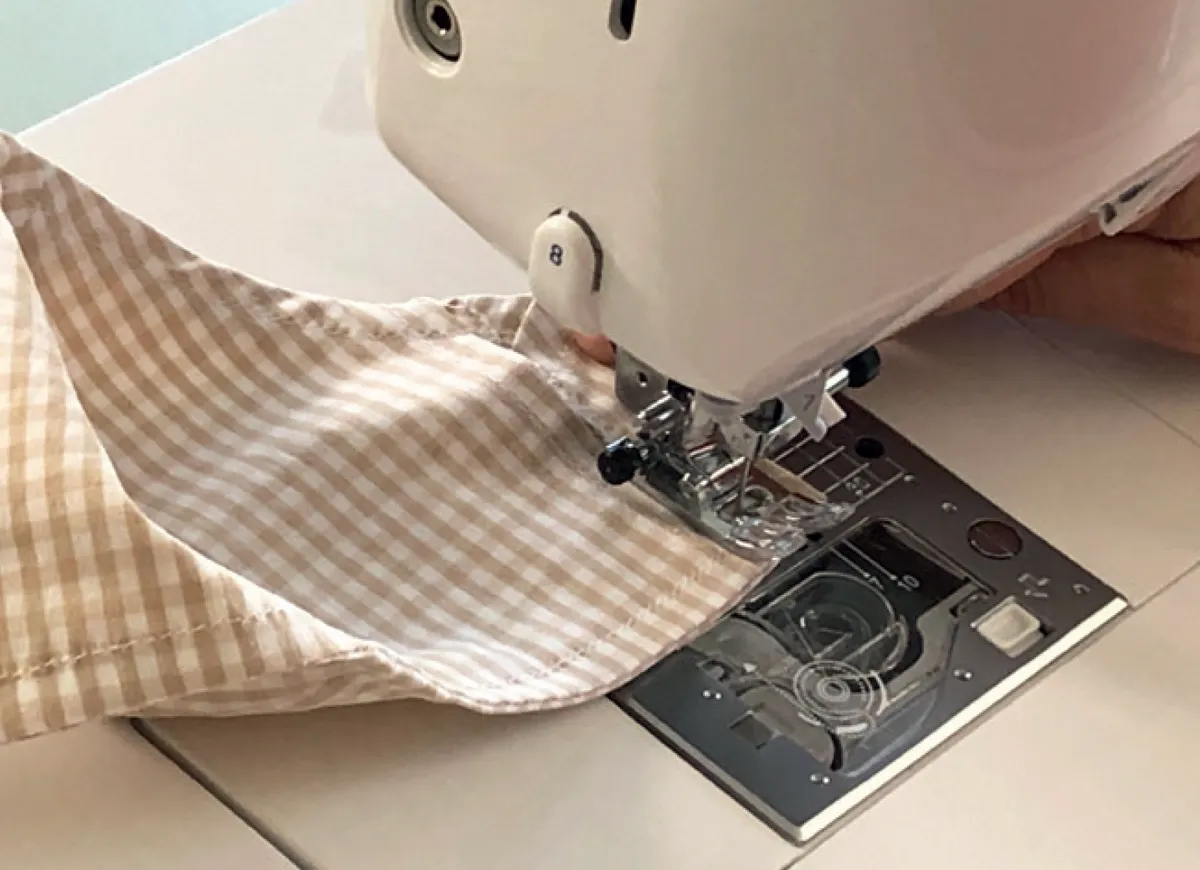
Step 8
Insert the elastic.
Cut the elastic into two equal pieces. Use a safety pin as a bodkin to insert the elastic through the side casings. Overlap the ends of the elastic for a proper fit and use a safety pin to secure each end. The elastic can then be removed before washing the mask.
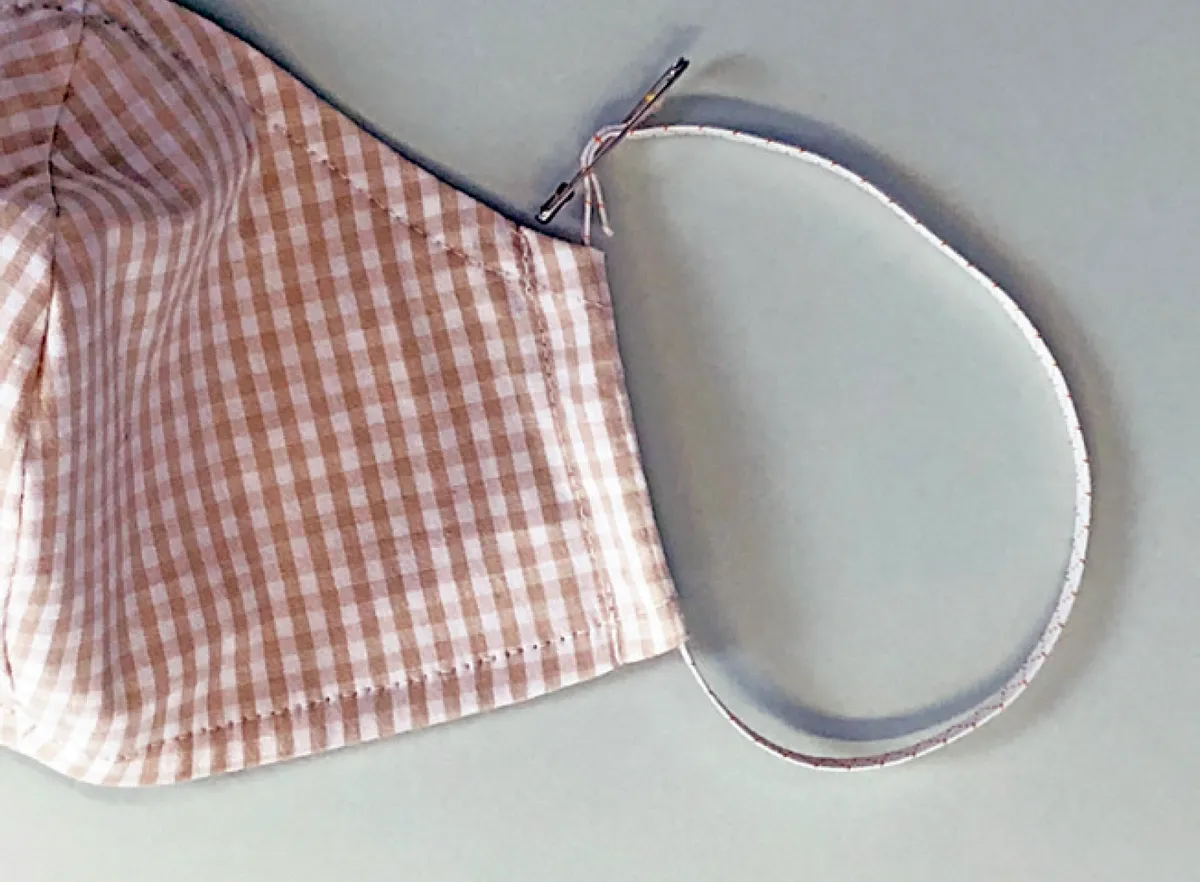
Step 9
Insert the wire.
Cut a piece of wire about 16 cm (6½in) long. Bend over the ends of the wire and slip it into the casing at the upper edge (space between upper edge and stitched seam). Press the wire to your face when you put on the mask. This will ensure an optimal fit. Insert the filter layer between the outer mask and the inside lining from the side. The elastic, wire and filter can be removed before washing the mask.
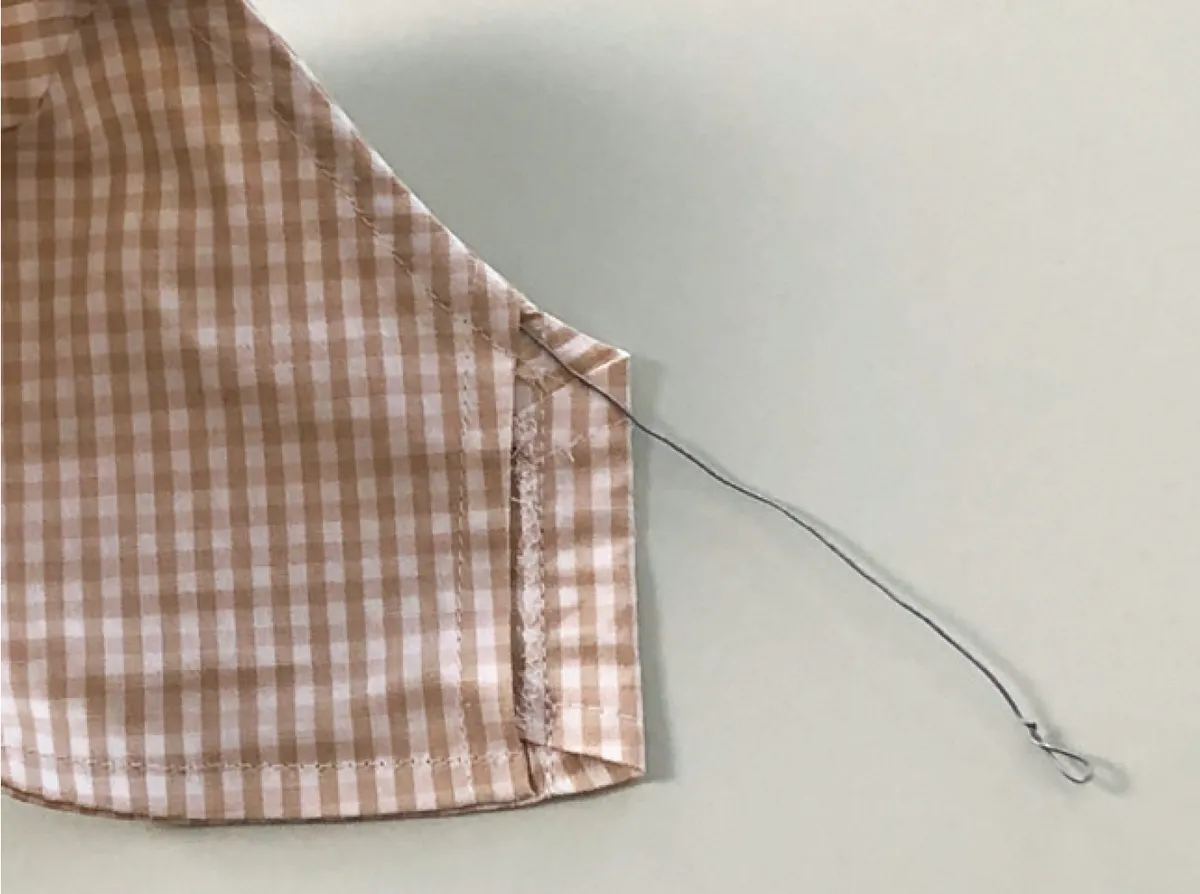
You're all done! If you're feeling confident, read on to discover how to make a pleated face mask using our free face mask template provided by Burda Style.

How to make a pleated face mask
You will need
- Tightly woven cotton fabric – 25 x 50 cm (10x20in)
- Elastic – 5 mm (3⁄16in) wide, about 50 cm (20in)
- 2 small safety pins
- Florist's wire or medium weight hobby wire, about 20 cm (8in)
- Interchangeable filter layer –14cm x 7cm (5½in x 3in) for example paper kitchen towels or antibacterial fibre fleece (you could use a high-filter vacuum cleaner bag or clean antibacterial dish washing sponge cloth)
- Basic sewing kit (we have rounded up everything you'll need in our sewing kits for beginners blog post)
- Sewing thread and a sewing machine (a sewing machine would be ideal but with a little patience, this mask can also be sewn by hand)
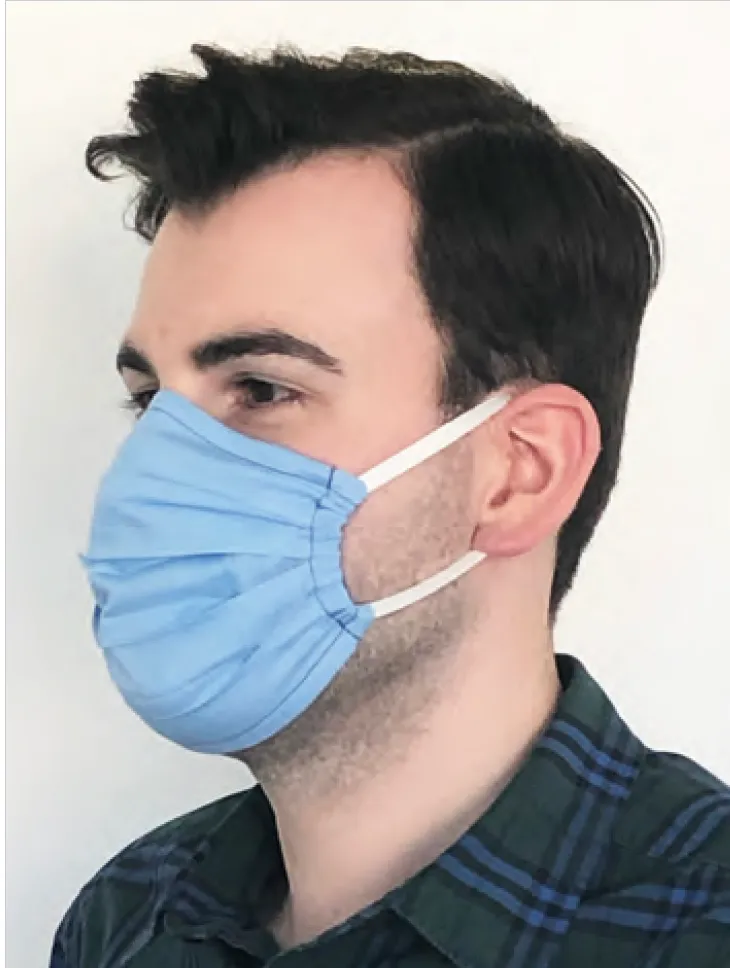
Free pleated mask pattern
Download our Pleated face mask pattern here.
The pattern pieces include 1 cm (⅜in) seam allowance.

Step 1
Prepare your materials
Before you begin, gather all required supplies. A sewing machine would be ideal, but with a little patience, however, the mask can also be sewn by hand. Cut out the paper pattern piece from page 4 of our free face mask pattern (above) The pattern piece includes seam allowances. If you would like to sew different sizes, the fabric can be cut wider or narrower.
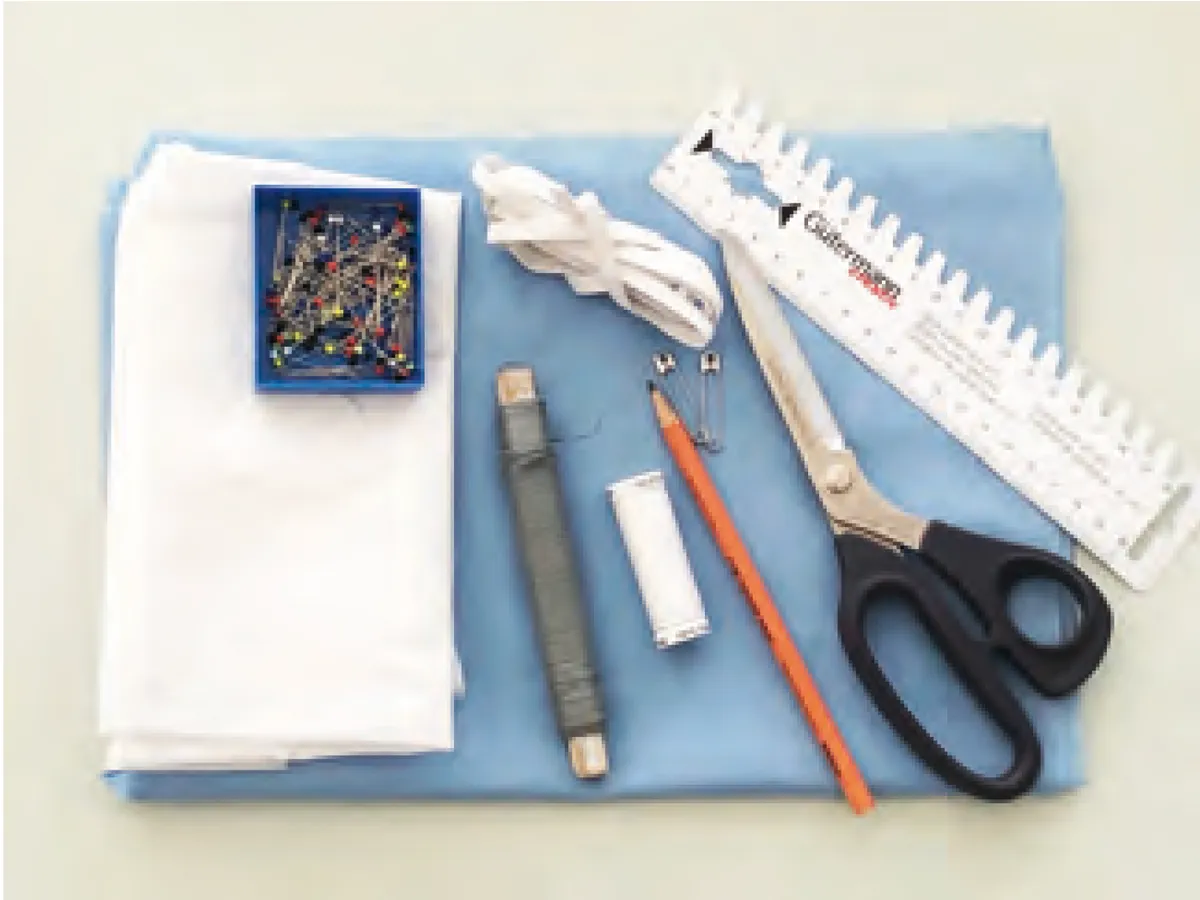
Step 2
Cut out the pieces for the face mask.
Using our free pattern PDF (above) you will need:
- 1 x outside (aussen) piece
- 1x inside (innen) piece
Pin the paper pattern piece to the fabric (printed side facing up) and use chalk or a pen to mark along the edge of the paper pattern piece. Cut out the piece on the marked lines (= outside piece). To cut out the smaller piece for the inside of the mask, fold the paper pattern piece on the broken line ("inside") and then pin it to the fabric. Use chalk or a pen to mark along the edge of the paper pattern piece. Cut out the piece on the marked lines. Cut the filter according the the given measurements.

Step 3
Transfer the markings for the pleats on both pieces: Clip the edges of the fabric on the inside and outside pieces for the markings by about 3 mm (⅛in). Fold the pieces from clipping to clipping along the edges and pin them in place with straight pins. The arrows on the paper pattern piece indicate the direction. Press the pleats across the entire width.

Step 4
Stitch the pleats.
Stitch the pleats on both sides on both pieces (inside and outside pieces) spaced 1.5 cm (⅝in) next to the edge.
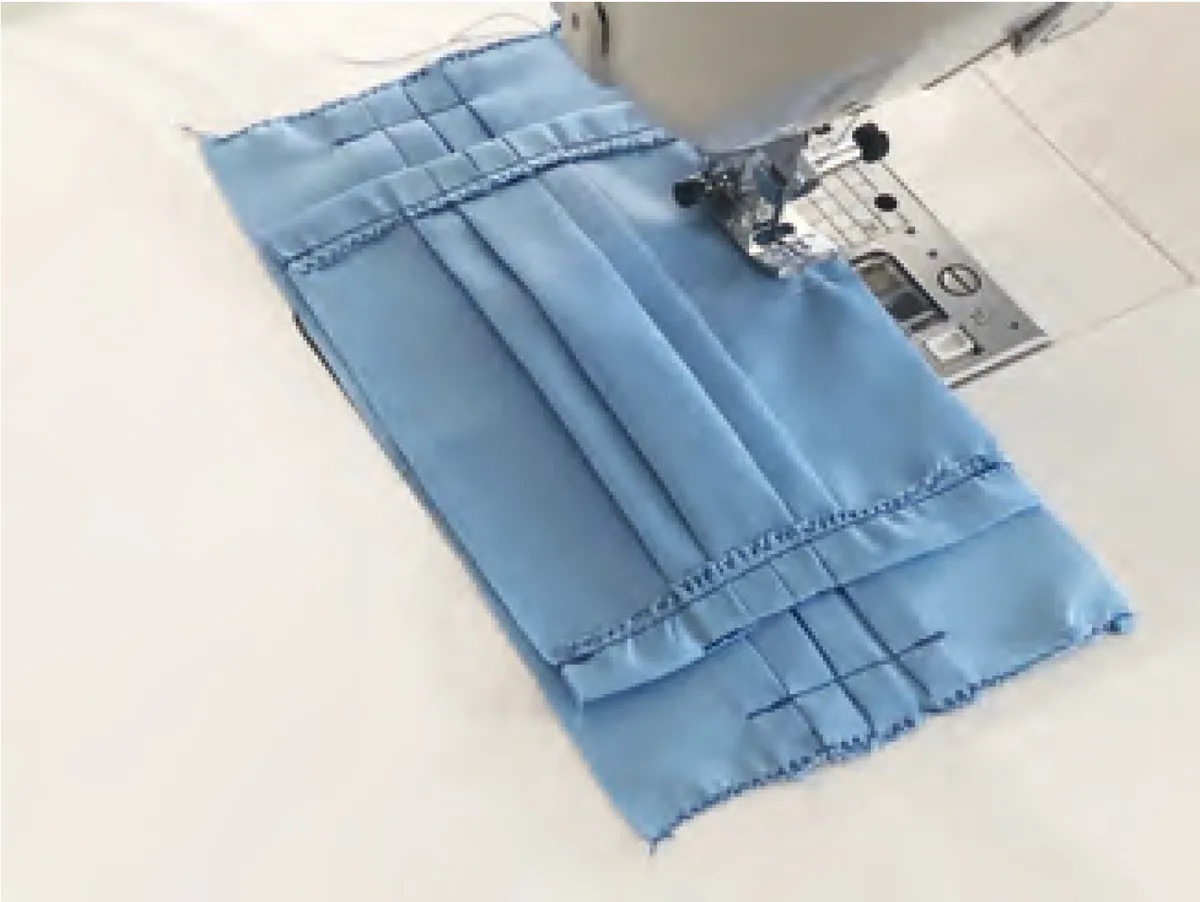
Step 5
Finish the narrow edges.
Neaten the allowances at the narrow edges of the inside and outside pieces with narrow zigzag stitching or with overlock stitch. Then press the edges of the inside piece 1.5cm (⅝in) wide to the inside and stitch 1 cm (⅜in) next to edge.
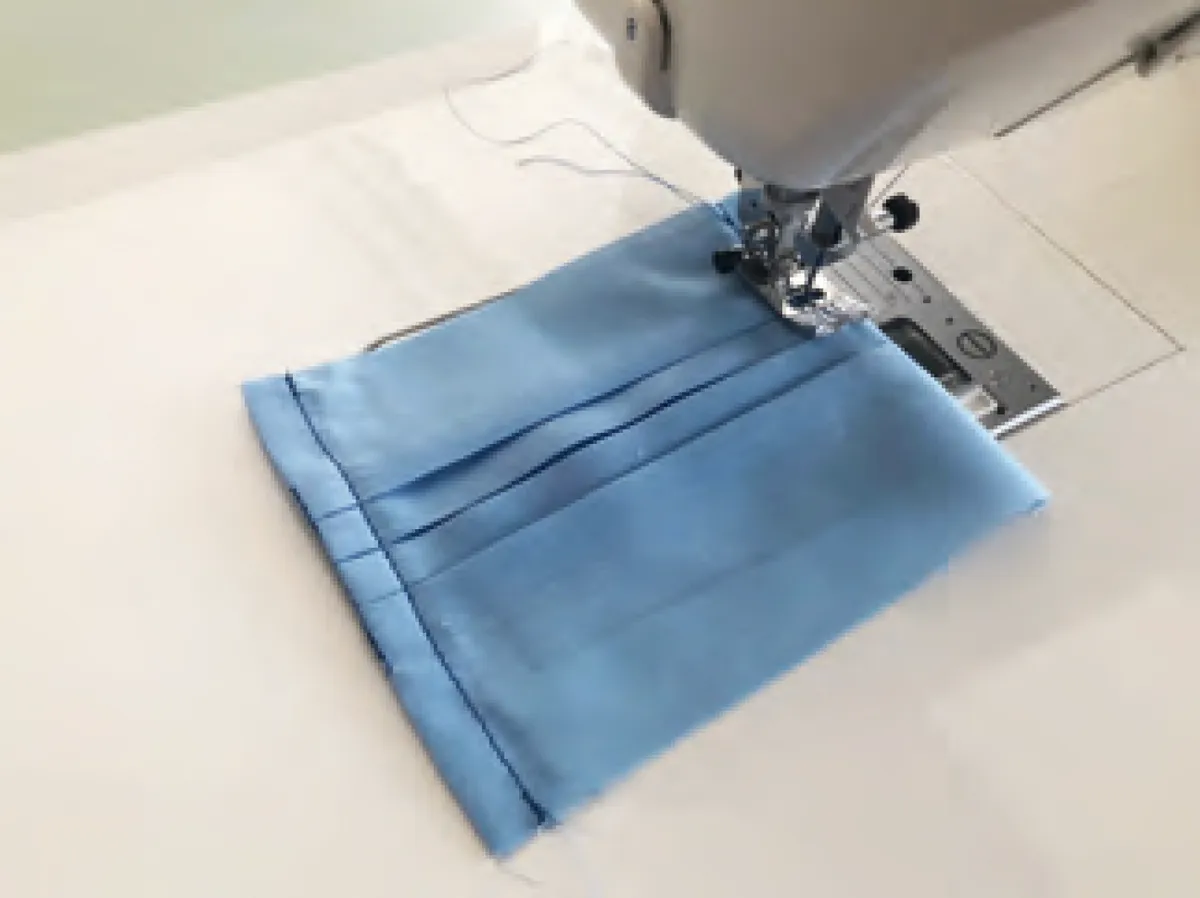
Step 6
Double the mask.
Use one straight pin each to mark the centre on the long edges of both pieces. Lay the inside piece on the outside piece with right sides facing (the 'good' fabric side faces in). Pin the upper and lower edges together (matching marked centres). Stitch together 1cm (⅜in) next to edges. Turn the mask right side out (the 'good' fabric side is now facing out) and press the upper and lower edges flat. Also press the seam allowance not yet sewn at the end of both edges.

Step 7
Construct a casing for the wire.
Stitch 7 mm (¼in) wide along the upper edge (width of your machine's presser foot) from one side edge to the other. This will create a casing for the wire. Stitch 7 mm (¼in) wide along the lower edge likewise.
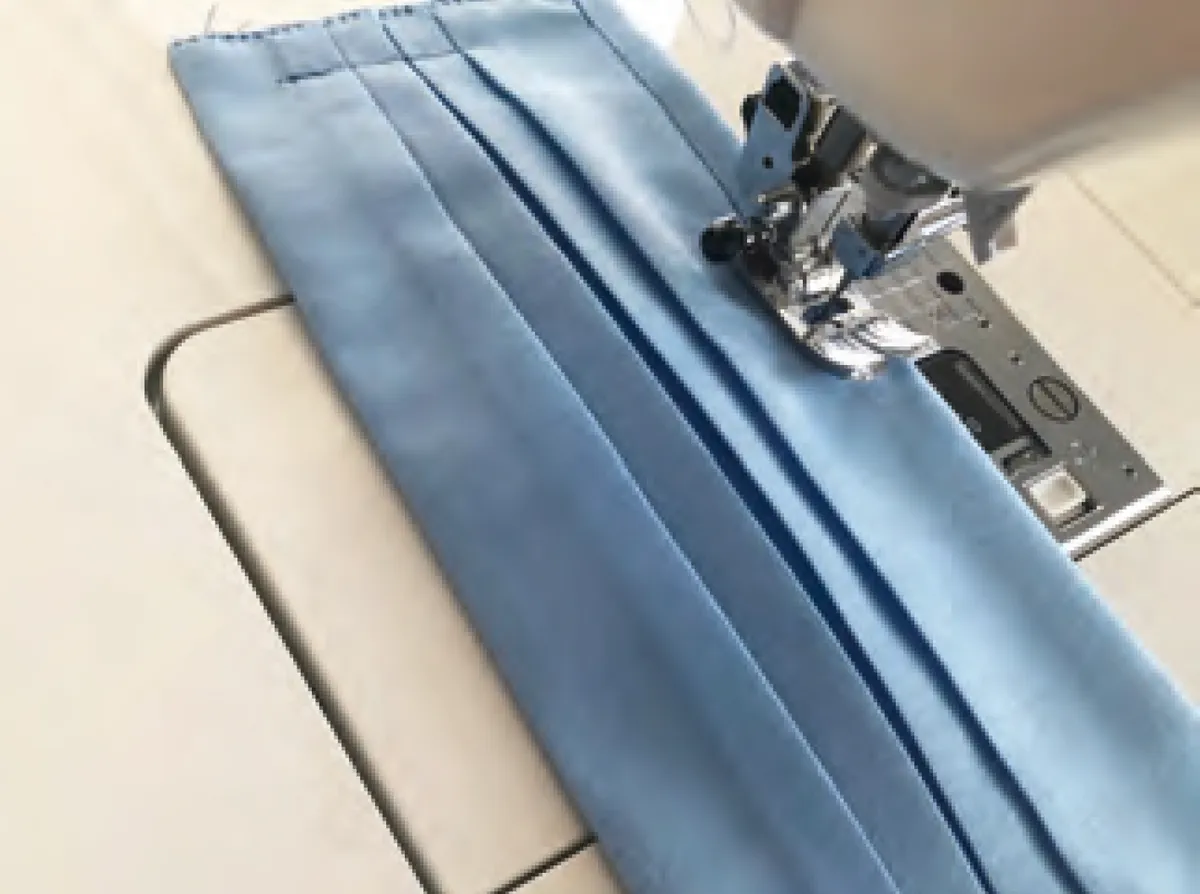
Step 8
Construct a casing for the elastic.
Press the allowances at the side edges of the outside piece 1.5 cm (⅝in) wide to inside (the small clippings indicate the width), and stitch the allowances 1 cm (⅜in) next to the edges.

Step 9
Insert elastic and wire.
Cut the elastic into two equal pieces. Use a safety pin as a bodkin to insert the elastic through the side casings. Use safety pins to secure the ends to fit you properly. Bend over the ends of the wire and slip it into the top casing. Press the wire to your face when you put on the mask. This will ensure an optimal fit. Insert the filter layer between the outside and inside piece from the side. The elastic, wire and filter can be removed before washing the mask.
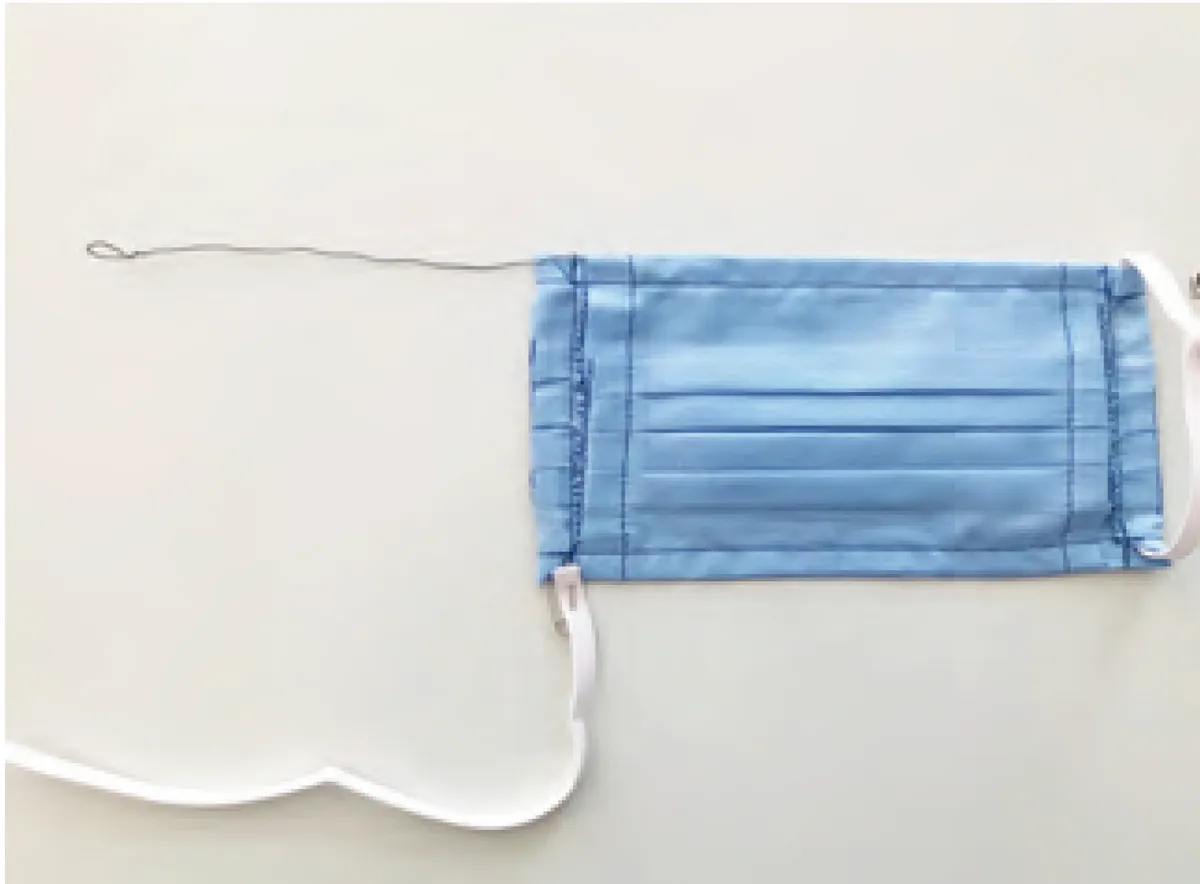
Now you've finished your face mask, remember to check the latest guidelines about wearing masks at the top of this post and we hope this pattern is useful for you and your family.
This face mask pattern has been kindly shared for free by the folks over at burdastyle.com – head to their website to browse thousands of sewing patterns and join their thriving community of fellow new friends who love to sew!
How to make a child's face mask
You can easily adapt the face mask video method above for into a face mask pattern for kids by simply starting off with smaller piece of fabric. Our first downloadable face mask pattern below also includes a child's size, though you may need to try making it a bit smaller again for small children.
To adapt the pleated face mask pattern, try printing it out at a slightly smaller size and folding a dummy copy from paper to check it fits your child's face before you cut into your fabric for the final version.
How to adjust a face mask that's too big
If your face mask is too loose, then you can tighten it by folding it in half and tying a knot in the mask as close to the fabric as you can get it. It should then fit more snugly around your face.
How to care for your reusable face mask
Your reusable face mask must always be kept dry. After wearing, carefully remove it and avoid touching the fabric sides. Wash the mask after use (at least once a day at a minimum of 60°). Remove the insert or any wires beforehand, then let your reusable face mask dry completely before wearing it again.
How often should you wash a face mask? Experts recommend that you should wash your mask regularly, ideally after every use.
Short of time? 15 of the best Handmade and Indie face masks
If you're not sure our patterns are for you, try these Etsy sellers who are offering handmade, inexpensive masks. These reusable face masks can be cleaned and used multiple times – and they look great too!
- Bumble Bee face mask - £4.50 – These lovely bumblebee-patterned masks are handmade with the profits being donated to the Mary Stevens hospice
- Krimson Knits – £6.50 100% cotton double-layered face masks (star pattern)
- Alize Artis – £6.50 – Handmade face masks, double layer, washable
- Pastel Poms – £5.00 – the Etsy store behind these face masks are donating the 50% of the profits to Colchester Zoo.
- Kids dinosaur face mask – £6 – These small-scale masks from Dashey Design add a fun touch for mini mask wearers
- Pack of 4 floral face masks – £14.02 – Essentia Crafts have created this multipack with a regency blooms style
- Ultra soft face masks with filter pockets - £6.39– These comfortable masks come in a range of soft pastel colours and include a pocket so that you can insert your own filter
- MissJboutiqueLDN ribbon face masks- £8.10 – Bring some vintage style into your life with these pretty ribbon masks
- TheBoxCard 3 layer reusable face mask – from £7.20 – These soft cotton masks come in a variety of modern patterns and shades, plus there's a pocket for a filter if you want to add one
- AnnieThornally small Liberty floral fabric face mask – £10 – These masks designed for teenagers and small adults come in a range of gorgeous Liberty fabric patterns
- Reusable Washable Cotton Blend Face Masks – £6 – Studio Hop's masks on Not on the High Street are made from two layers of cotton and polyester velvet fabric, with adjustable elasticated straps to create a comfortable wearing experience.
- Fabbies 6 pack of William Morris inspired DIY Facemask kits – £20 Not on the High Street – a hybrid! Make your own but with all the fabric and instructions ready to go.
- Liberty Print Pleated Face Mask – £12 from Undercover, Not on the High Street offer super soft Liberty print Tana Lawn cotton fabric masks with comfy elastic ties.
- 5 pack of non-medical Face Mask Coverings – £30 for 5, Boden – Beautiful fabric prints!
- Lavender Flower Embroidered Masks – £6.30, Etsy – we love the beautiful embroidery on these linen face masks.
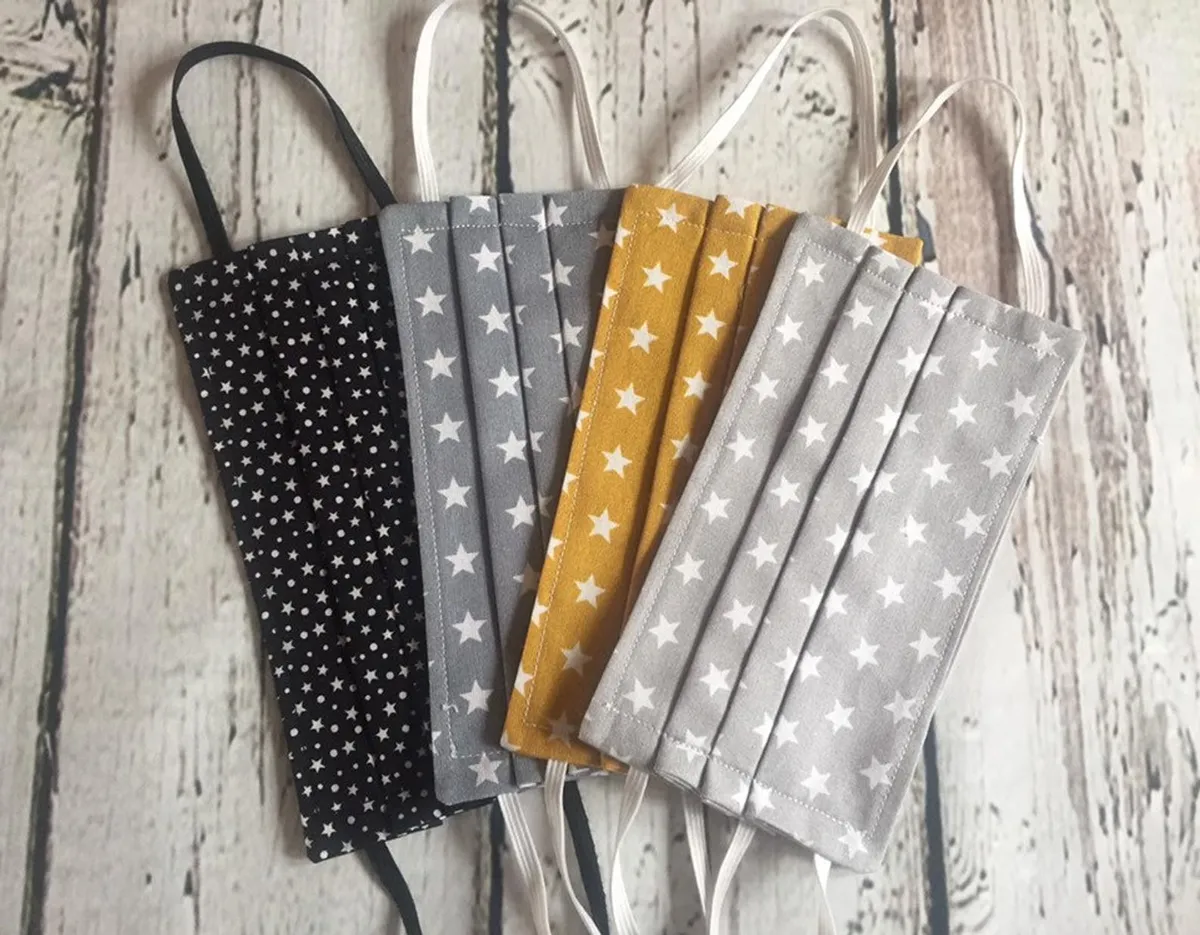
New to sewing? If these patterns give you a taste for more, check out our Beginners Guide to Sewing or dive on into our How to Sew hub. If you're looking to make a batch of masks for friends and family (or maybe to sell) and you don't have a machine yet, they don't have to cost much. We've put together a round up of the best Best Sewing Machines for Beginners to get you started. You might also want to read our how to use a sewing machine guide before you sew.
